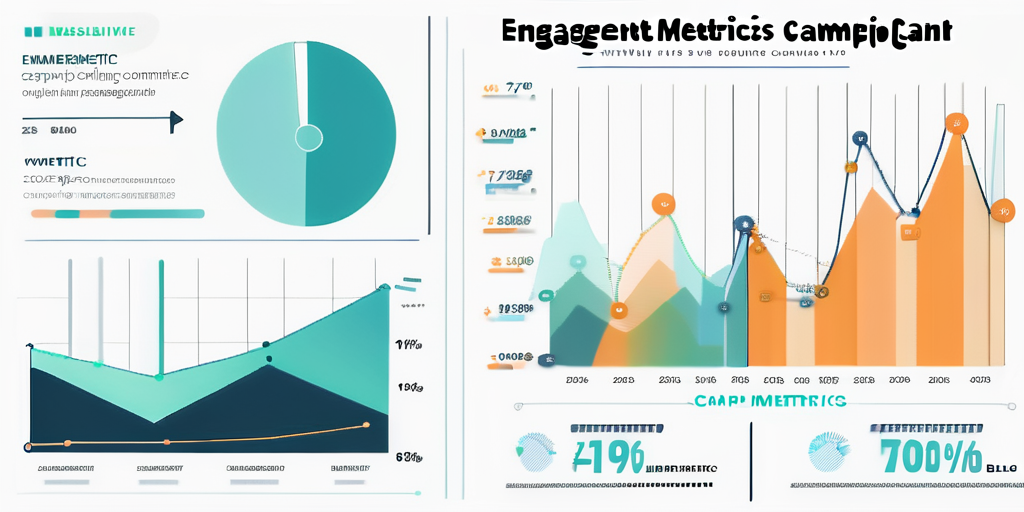The Power of Effective Storytelling in Social Media Campaigns
Social media has become an indispensable tool for marketing in today’s digital age. However, with the overwhelming amount of content available to users, it can be challenging for brands to stand out and capture their audience’s attention. This is where the power of effective storytelling comes into play. By crafting compelling narratives on social media platforms, brands can connect with their audience on a deeper level and drive engagement and brand loyalty.
Understanding the Concept of Storytelling in Social Media
Storytelling is an age-old practice that has been used to convey ideas and engage audiences for centuries. In the context of social media, storytelling involves using narrative elements to create a meaningful and memorable experience for the audience. By tapping into the power of storytelling, brands can transform mundane messages into captivating stories that resonate with their target audience.
The Role of Narrative in Digital Marketing
In digital marketing, narrative plays a crucial role in capturing the attention of social media users. By weaving a compelling story, brands can create an emotional connection with their audience, making their message more impactful and memorable. Narratives allow brands to showcase their values, humanize their products or services, and establish a unique identity in a crowded online landscape.
Key Elements of a Compelling Social Media Story
To create an effective social media story, brands need to incorporate key elements that engage and captivate their audience. These elements include a relatable protagonist, a well-defined conflict or challenge, a clear resolution, and an emotional arc that connects with the audience’s own experiences. By using these elements, brands can create stories that resonate with their audience and leave a lasting impression.
One important aspect to consider when crafting a social media story is the power of visuals. Incorporating visually appealing images or videos can enhance the storytelling experience and make it more immersive for the audience. By utilizing compelling visuals that align with the narrative, brands can create a multi-sensory experience that captivates and engages their audience on a deeper level.
Furthermore, an effective social media story should also take into account the importance of authenticity. In a world saturated with content, audiences are craving genuine and authentic experiences. Brands that are able to convey their story in an authentic and transparent manner are more likely to build trust and loyalty with their audience. By being true to their values and showcasing their unique personality, brands can create a genuine connection with their audience that goes beyond a simple marketing message.
The Impact of Storytelling on Social Media Engagement
One of the main benefits of incorporating storytelling into social media campaigns is its ability to boost audience engagement. By presenting information in a narrative format, brands can make their content more entertaining and shareable. This increased engagement can lead to higher reach, increased social media interactions, and ultimately, a stronger connection between the brand and its audience.
Boosting Audience Interaction Through Stories
Social media stories, such as those found on platforms like Instagram and Facebook, provide brands with an interactive and immersive way to engage their audience. By utilizing features like polls, questions, and stickers, brands can encourage user participation and create a sense of community. This fosters a deeper connection between the brand and its audience, leading to increased loyalty and advocacy.
How Storytelling Enhances Brand Perception
Storytelling also has a profound impact on how audiences perceive a brand. Through an engaging narrative, brands can shape their image and personality, effectively differentiating themselves from competitors. By conveying their values and purpose through storytelling, brands can build trust and establish an emotional bond with their audience, ultimately influencing their purchasing decisions.
Moreover, storytelling on social media allows brands to humanize themselves and connect with their audience on a more personal level. By sharing relatable stories, brands can tap into the emotions and experiences of their target audience, creating a sense of empathy and understanding. This emotional connection not only strengthens the bond between the brand and its audience but also fosters a sense of brand loyalty and advocacy.
In addition, incorporating storytelling into social media campaigns can help brands create a cohesive and consistent brand identity. Through consistent storytelling, brands can establish a clear brand voice and tone, which resonates with their target audience. This consistency helps in building brand recognition and recall, ensuring that the brand remains top of mind for consumers when making purchasing decisions.
Crafting Your Brand’s Story for Social Media
To effectively leverage the power of storytelling in social media campaigns, brands need to craft their unique narrative. This involves identifying their brand’s values, understanding their target audience, and tailoring their story to different social media platforms.
Identifying Your Brand’s Unique Narrative
Every brand has a unique story waiting to be told. By understanding their brand’s history, mission, and values, marketers can identify the key elements that make their brand stand out. This knowledge allows them to create narratives that resonate with their target audience and establish a strong brand identity on social media.
For instance, let’s take the example of a clothing brand that prides itself on sustainability. Their unique narrative could revolve around their commitment to using eco-friendly materials, their efforts to reduce waste in the fashion industry, and their partnerships with local artisans. By highlighting these aspects, the brand not only differentiates itself from competitors but also appeals to environmentally conscious consumers who are increasingly seeking sustainable fashion options.
Tailoring Your Story to Different Social Media Platforms
Each social media platform has its own unique style and audience demographics. To ensure maximum impact, brands need to tailor their storytelling approach to fit each platform’s characteristics. For example, visually-oriented platforms like Instagram may require more emphasis on compelling images and videos, while platforms like LinkedIn may require a more professional and informative tone.
When crafting their brand’s story for Instagram, the clothing brand mentioned earlier could showcase vibrant images of their sustainably sourced fabrics, behind-the-scenes videos of their artisans at work, and user-generated content featuring customers wearing their eco-friendly designs. On the other hand, for LinkedIn, the brand could focus on sharing informative articles about sustainable fashion trends, industry insights, and interviews with experts in the field. This approach would help them establish themselves as thought leaders in the sustainable fashion space and attract professionals who are interested in ethical and environmentally friendly practices.
The Role of Visuals in Social Media Storytelling
Visual content plays a vital role in capturing the attention of social media users. By incorporating visually appealing images and videos into their narratives, brands can create a more immersive and engaging experience for their audience.
The Power of Images in Digital Narratives
Images have the ability to convey messages and emotions instantly. By carefully selecting and curating relevant visuals, brands can enhance the storytelling experience and make their content more visually appealing. Incorporating images that resonate with the audience’s aspirations and desires can create a powerful emotional connection and leave a lasting impression.
Utilizing Video for Effective Storytelling
Video content has gained immense popularity on social media platforms due to its ability to convey stories in a dynamic and engaging manner. By utilizing videos, brands can create immersive narratives that capture the attention of their audience. From short, impactful clips to longer-form storytelling, video content allows brands to convey their message in a visually compelling way.
But what makes video such a powerful tool for storytelling? It’s the combination of visuals, audio, and motion that creates a multi-sensory experience for the viewer. When we watch a video, we not only see the images but also hear the sounds, whether it’s the music playing in the background or the voices of the people speaking. This audiovisual experience adds depth and richness to the story, making it more engaging and memorable.
Furthermore, videos have the ability to transport us to different places and times. Through the use of cinematic techniques such as camera angles, lighting, and editing, brands can create a sense of immersion and take their audience on a journey. Whether it’s a travel vlog that makes us feel like we’re exploring a new city or a behind-the-scenes video that gives us a glimpse into the making of a product, videos have the power to transport us and make us feel like we’re a part of the story.
Measuring the Success of Your Storytelling Campaign
To ensure the effectiveness of a storytelling campaign, it is crucial to measure its impact and make necessary adjustments. By monitoring key metrics, brands can gain insights into the campaign’s performance and make data-driven decisions to optimize future storytelling efforts.
Key Metrics for Evaluating Storytelling Impact
When assessing the success of a storytelling campaign, brands can look at metrics such as reach, engagement, conversion rates, and brand sentiment. These metrics provide valuable insights into the campaign’s reach and effectiveness in driving desired actions among the target audience.
Adjusting Your Strategy Based on Performance Feedback
The data collected from the campaign’s performance can guide future storytelling strategies. By analyzing the metrics, brands can identify areas for improvement and make necessary adjustments to optimize their storytelling efforts. This iterative process allows brands to continually refine their approach and achieve better results over time.
In conclusion, effective storytelling plays a pivotal role in social media campaigns. By integrating compelling narratives, brands can captivate their audience, enhance engagement, and shape brand perception. Through the power of storytelling, brands can create a lasting impact in the competitive world of social media marketing.
Ready to turn your nonprofit’s story into a powerful growth engine? At BlueWing, we understand the unique challenges and opportunities that come with nonprofit digital marketing. Let us help you harness the full potential of paid social media and search to amplify your impact. With our expertise, especially in the Google Ad Grants program, and a commitment to sustainable growth, we’re here to guide you every step of the way. Contact us today to start crafting your success story.





